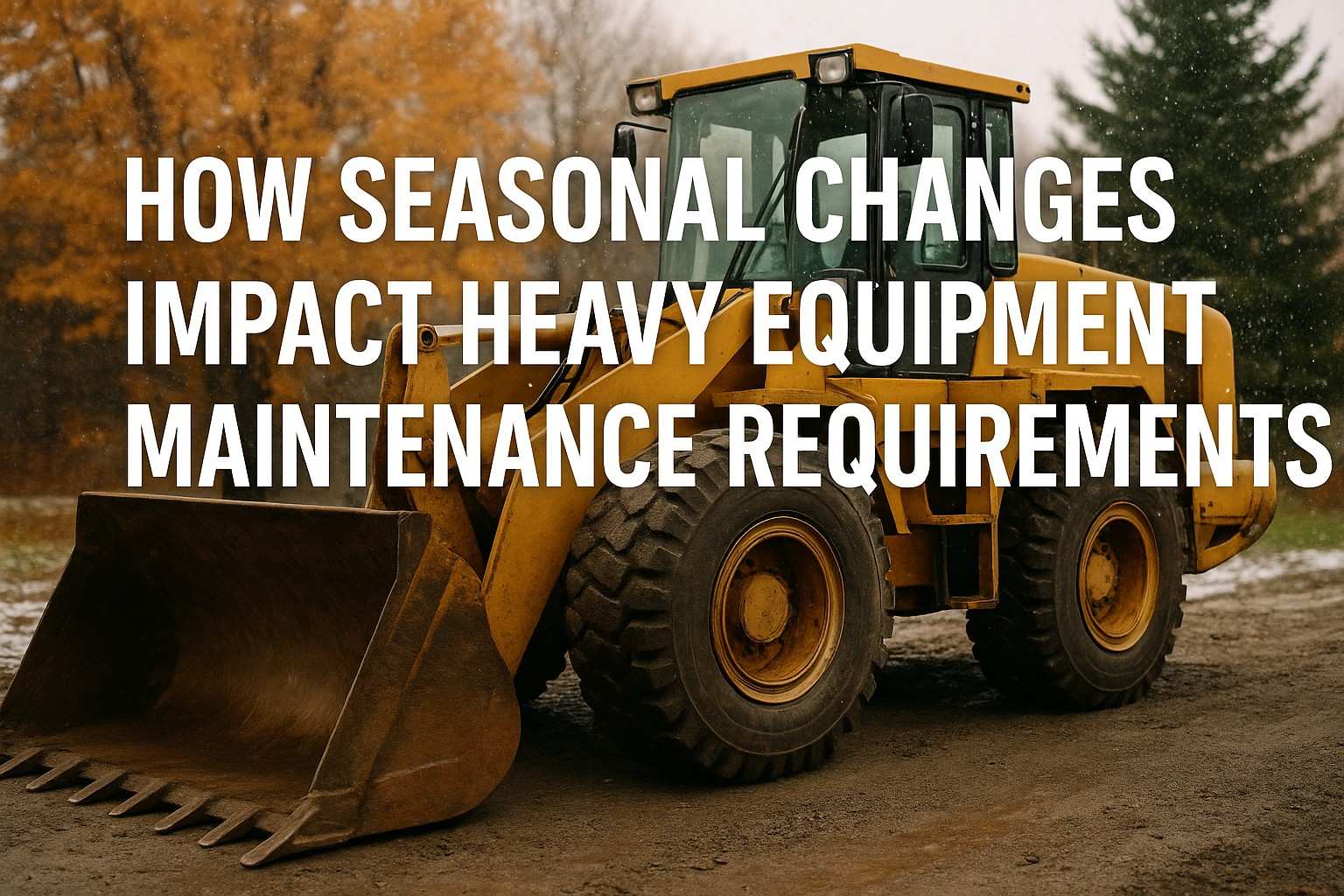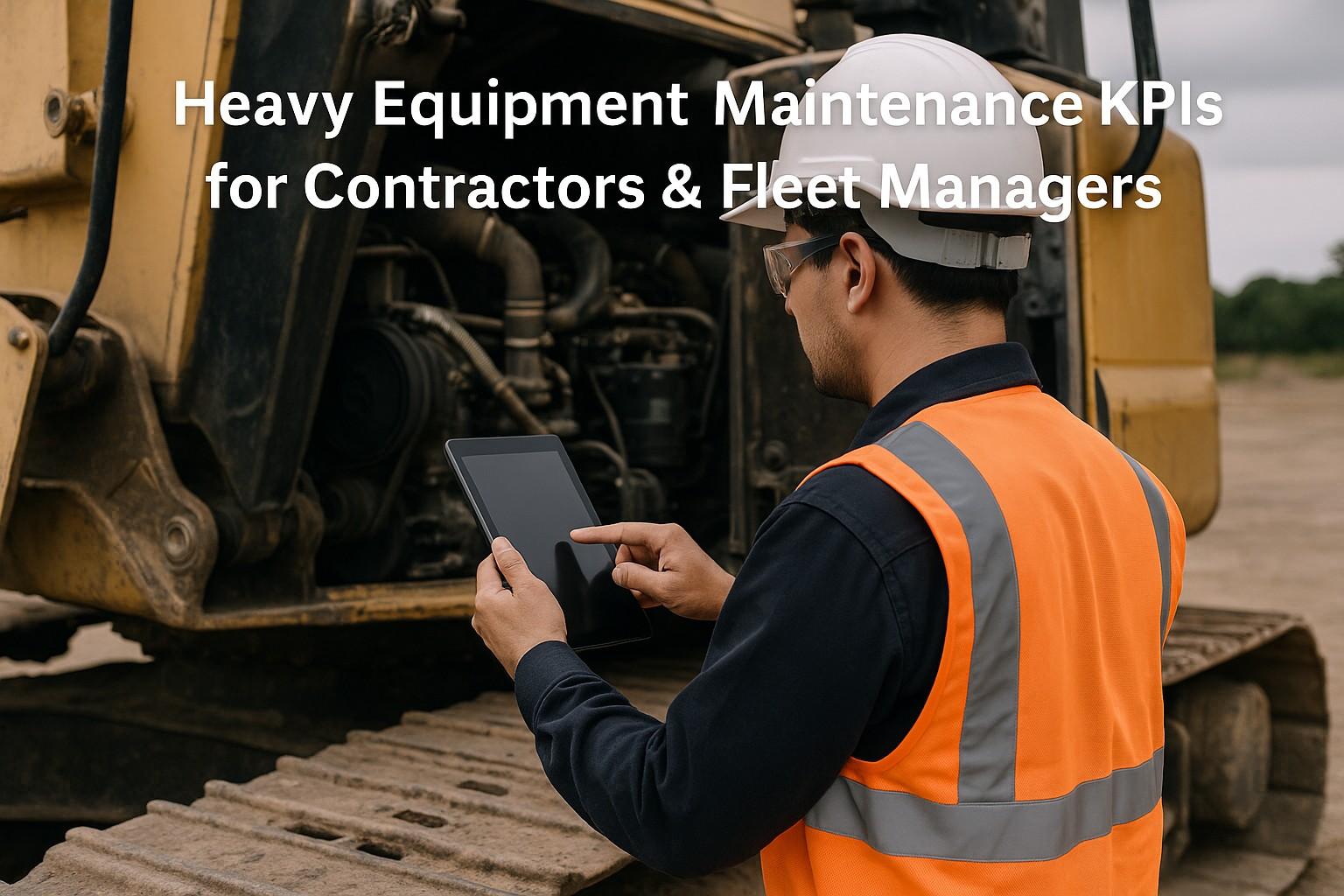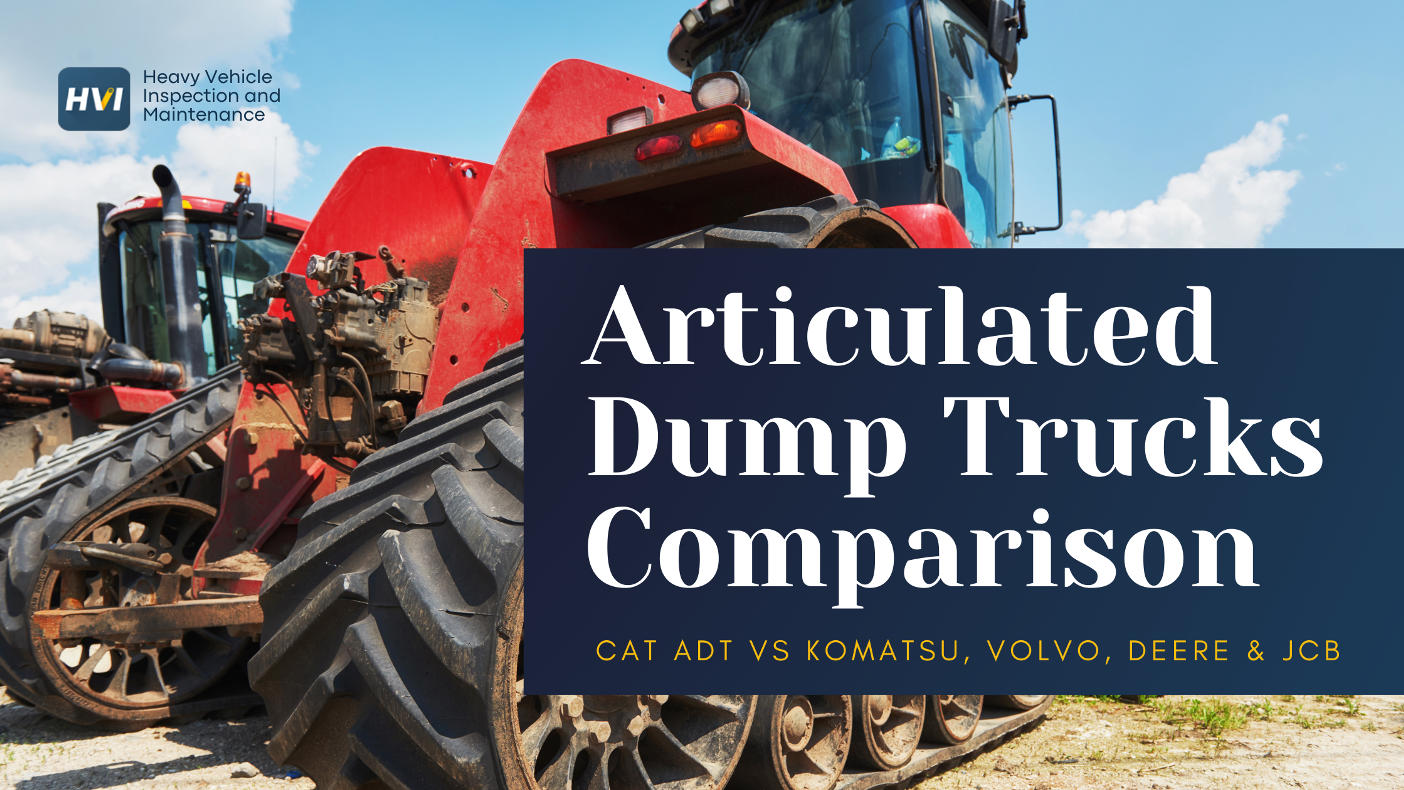Building an effective preventive maintenance schedule for mixed fleets and equipment represents one of the most challenging yet critical responsibilities facing modern fleet managers. A well-designed preventive maintenance schedule can reduce equipment downtime by up to 75% while cutting maintenance costs by 30-40%, yet many organizations struggle with the complexity of managing diverse equipment types, varying operational demands, and conflicting maintenance requirements across their fleet operations.
Whether you're managing a construction fleet with excavators, trucks, and generators, or overseeing a mixed commercial fleet including delivery vehicles, service trucks, and specialized equipment, creating a comprehensive maintenance schedule requires strategic planning, advanced fleet management software, and systematic execution. This definitive guide reveals proven strategies that successful fleet managers use to build robust preventive maintenance schedules that maximize equipment reliability while optimizing operational costs.
Understanding Preventive Maintenance Schedule Fundamentals
What Makes Mixed Fleet Maintenance Complex
Mixed fleets present unique challenges that single-equipment operations don't face. Different equipment types have varying maintenance intervals, require specialized technicians, use different parts inventories, and operate under diverse conditions that affect wear rates and service requirements.
A preventive maintenance schedule must account for these variables while maintaining operational efficiency and cost control. Fleet management software becomes essential for coordinating multiple equipment types, tracking varied maintenance intervals, and ensuring no critical services are missed.
The Business Case for Systematic Maintenance Scheduling
Professional preventive maintenance schedules deliver measurable business benefits that extend far beyond simple equipment reliability. Organizations implementing comprehensive maintenance programs typically experience:
- 60-70% reduction in unexpected equipment failures
- 25-35% decrease in total maintenance costs
- 40-50% improvement in equipment availability
- Significant reduction in safety incidents and liability exposure
- Enhanced equipment resale values and extended service life
These improvements directly impact profitability while building competitive advantages through superior equipment reliability and operational efficiency.
Core Components of Effective Preventive Maintenance Schedules
Equipment Classification and Categorization
Successful preventive maintenance schedules begin with systematic equipment classification that groups similar equipment types while identifying unique maintenance requirements for each category.
Primary Equipment Categories:
- Heavy construction equipment (excavators, bulldozers, cranes)
- Commercial vehicles (trucks, vans, trailers)
- Support equipment (generators, compressors, pumps)
- Specialized machinery (industry-specific equipment)
- Fleet vehicles (passenger cars, service vehicles)
Each category requires specific maintenance intervals, procedures, and expertise levels that must be coordinated within the overall maintenance schedule framework.
Maintenance Interval Determination
Establishing appropriate maintenance intervals requires balancing manufacturer recommendations with actual operating conditions, usage patterns, and historical performance data.
Interval Setting Factors:
- Manufacturer warranty requirements and recommendations
- Operating environment conditions (dust, temperature, humidity)
- Equipment utilization rates and duty cycles
- Historical failure patterns and maintenance records
- Regulatory compliance requirements
- Cost optimization considerations
Modern fleet maintenance software automates interval calculations while adjusting schedules based on actual equipment usage and condition monitoring data.
Resource Planning and Allocation
Effective preventive maintenance schedules must account for available resources including technician time, parts inventory, facility capacity, and budget constraints.
Resource Planning Elements:
- Technician skill requirements and availability
- Parts inventory levels and procurement lead times
- Maintenance facility scheduling and capacity
- Budget allocation across equipment categories
- Equipment downtime coordination and scheduling
- Emergency repair capabilities and procedures
Building Your Preventive Maintenance Schedule Framework
Phase 1: Equipment Assessment and Documentation
The foundation of any successful preventive maintenance schedule lies in comprehensive equipment assessment and documentation that provides the data necessary for informed scheduling decisions.
Equipment Documentation Requirements:
- Complete equipment inventory with identification numbers, specifications, and locations
- Manufacturer maintenance manuals and recommended service intervals
- Historical maintenance records including repairs, parts replacements, and costs
- Operating condition assessments for each piece of equipment
- Usage pattern analysis including hours, cycles, and duty classifications
- Critical equipment identification based on operational importance
This documentation phase typically requires 2-4 weeks for most fleets but provides the foundation for all subsequent maintenance planning activities.
Phase 2: Maintenance Task Definition and Standardization
Standardized maintenance procedures ensure consistent service quality while enabling efficient resource planning and technician training.
Maintenance Task Categories:
- Daily inspections: Quick visual checks and operational tests
- Weekly services: Fluid level checks, lubrication, and basic adjustments
- Monthly maintenance: Detailed inspections, filter changes, and calibrations
- Quarterly services: Comprehensive system checks and major component services
- Annual overhauls: Complete equipment rebuilds and major replacements
Each maintenance task should include detailed procedures, required tools, expected completion times, and quality control checkpoints that ensure consistent execution across all technicians.
Phase 3: Schedule Integration and Optimization
Integrating individual equipment maintenance requirements into a cohesive fleet schedule requires sophisticated planning that minimizes operational disruption while maximizing resource efficiency.
Schedule Optimization Strategies:
- Equipment grouping by location, type, or operational requirements
- Maintenance clustering to combine multiple services during single downtime periods
- Resource leveling to balance technician workloads across time periods
- Critical path planning to prioritize high-impact equipment maintenance
- Buffer time allocation for unexpected issues and emergency repairs
Professional fleet management software automates much of this optimization while providing real-time adjustments based on changing operational requirements.
Advanced Preventive Maintenance Schedule Strategies
Condition-Based Maintenance Integration
Modern preventive maintenance schedules incorporate condition monitoring technologies that adjust maintenance intervals based on actual equipment condition rather than arbitrary time periods.
Condition Monitoring Technologies:
- Vibration analysis for rotating equipment and engines
- Oil analysis programs for hydraulic and engine systems
- Thermal imaging for electrical systems and bearing monitoring
- Telematics data for usage patterns and performance metrics
- Digital inspection tools for consistent condition assessment
These technologies enable predictive maintenance approaches that optimize maintenance timing while preventing unexpected failures.
Fleet Management Software Implementation
Professional fleet management software transforms preventive maintenance scheduling from manual, error-prone processes into automated, optimized systems that ensure no maintenance is missed while minimizing costs.
Software System Benefits:
- Automated scheduling based on time, usage, or condition triggers
- Resource optimization for technicians, parts, and facilities
- Real-time tracking of maintenance completion and compliance
- Cost analysis and budget forecasting capabilities
- Integration with telematics, inventory, and accounting systems
Leading fleet management platforms provide mobile applications that enable field technicians to update maintenance records in real-time while ensuring accurate schedule tracking.
Multi-Location Fleet Coordination
Organizations operating equipment across multiple locations face additional complexity requiring sophisticated coordination and communication systems.
Multi-Location Strategies:
- Centralized scheduling with local execution capabilities
- Standardized procedures across all locations and equipment types
- Parts inventory optimization with strategic stocking locations
- Technician certification programs ensuring consistent service quality
- Performance benchmarking across locations and equipment categories
Digital fleet maintenance management platforms enable seamless coordination across multiple locations while maintaining local flexibility and responsiveness.
Implementation Best Practices for Mixed Fleet Maintenance
Phased Implementation Approach
Successful preventive maintenance schedule implementation requires a systematic, phased approach that builds capabilities while maintaining operational continuity.
Implementation Phases:
- Pilot program with critical equipment categories
- System refinement based on pilot program results
- Gradual expansion to additional equipment types
- Full fleet integration with all equipment categories
- Continuous improvement based on performance data
This approach minimizes disruption while allowing for system refinement and technician training throughout the implementation process.
Technician Training and Development
Preventive maintenance schedule success depends heavily on technician competency and commitment to following established procedures.
Training Program Elements:
- Equipment-specific maintenance procedures and safety protocols
- Digital system training for maintenance management software
- Quality control procedures and documentation requirements
- Troubleshooting skills for identifying and resolving issues
- Continuous education on new technologies and best practices
Regular training updates ensure technicians stay current with evolving equipment technologies and maintenance best practices.
Performance Measurement and Optimization
Effective preventive maintenance schedules require continuous monitoring and improvement based on measurable performance indicators.
Key Performance Metrics:
- Equipment availability and uptime percentages
- Maintenance cost per operating hour across equipment categories
- Schedule compliance rates and missed maintenance events
- Mean time between failures for critical equipment
- Parts inventory turnover and obsolescence rates
- Technician productivity and efficiency measurements
Regular analysis of these metrics identifies improvement opportunities while validating the effectiveness of maintenance schedule adjustments.
Technology Integration for Modern Fleet Maintenance
Digital Inspection and Documentation Tools
Modern preventive maintenance schedules leverage digital tools that ensure consistent inspection quality while streamlining documentation and reporting processes.
Digital Tool Benefits:
- Standardized inspection checklists with photo documentation capabilities
- Real-time data collection and automatic schedule updates
- Trend analysis for equipment condition and performance
- Compliance tracking for regulatory and warranty requirements
- Integration with fleet management and inventory systems
Professional digital inspection platforms eliminate paperwork while ensuring thorough, consistent maintenance documentation across all equipment types.
Predictive Analytics and Machine Learning
Advanced fleet management systems incorporate predictive analytics that optimize maintenance schedules based on historical data, usage patterns, and equipment condition trends.
Predictive Capabilities:
- Failure prediction based on equipment condition and usage data
- Optimal timing for maintenance interventions
- Parts demand forecasting for inventory optimization
- Resource allocation optimization for maximum efficiency
- Cost prediction and budget planning support
These technologies enable proactive maintenance approaches that prevent failures while optimizing resource utilization and costs.
Telematics Integration and Remote Monitoring
Fleet telematics systems provide real-time equipment data that enhances preventive maintenance scheduling through accurate usage tracking and condition monitoring.
Telematics Benefits:
- Precise usage tracking for accurate maintenance interval calculations
- Operating condition monitoring for schedule adjustments
- Automated alerts for maintenance due dates and critical issues
- Performance analytics for equipment optimization
- Fuel efficiency tracking and optimization opportunities
Integration between telematics systems and fleet maintenance software creates comprehensive fleet management platforms that optimize both maintenance and operational efficiency.
Cost Management and Budget Planning
Maintenance Cost Analysis and Forecasting
Effective preventive maintenance schedules require sophisticated cost analysis that balances maintenance investments with operational requirements and budget constraints.
Cost Analysis Components:
- Labor costs including technician time and skill requirements
- Parts and materials inventory and procurement costs
- Equipment downtime costs and operational impacts
- Facility and equipment costs for maintenance operations
- Compliance and regulatory costs for required maintenance
Regular cost analysis identifies optimization opportunities while ensuring adequate budget allocation for critical maintenance activities.
Return on Investment Optimization
Professional preventive maintenance programs deliver measurable ROI through reduced failures, extended equipment life, and improved operational efficiency.
ROI Calculation Factors:
- Avoided repair costs through preventive maintenance
- Reduced downtime and associated productivity losses
- Extended equipment life and improved resale values
- Lower insurance premiums through improved safety records
- Regulatory compliance benefits and avoided penalties
Comprehensive ROI analysis justifies maintenance program investments while identifying the most cost-effective improvement opportunities.
Industry-Specific Considerations
Construction Fleet Maintenance Scheduling
Construction fleets face unique challenges including harsh operating conditions, varied equipment types, and project-based utilization patterns that require specialized maintenance approaches.
Construction-Specific Factors:
- Environmental conditions including dust, mud, and abrasive materials
- High-stress operations with heavy loads and continuous duty cycles
- Project scheduling constraints and equipment mobility requirements
- Seasonal variations in equipment usage and maintenance requirements
- Safety compliance requirements for construction site operations
Commercial Fleet Maintenance Management
Commercial fleets prioritize vehicle availability and cost control while maintaining regulatory compliance and customer service standards.
Commercial Fleet Priorities:
- Vehicle availability for customer service commitments
- Fuel efficiency optimization through proper maintenance
- Regulatory compliance for DOT and safety requirements
- Driver safety and accident prevention measures
- Cost control and predictable maintenance budgets
Specialized Equipment Maintenance
Specialized equipment requires expert knowledge and specialized parts that affect maintenance scheduling and resource requirements.
Specialized Equipment Considerations:
- Technical expertise requirements for complex equipment
- Parts availability and extended lead times for specialized components
- Manufacturer support and warranty compliance requirements
- Training requirements for technicians and operators
- Performance monitoring for optimal equipment utilization
Measuring Preventive Maintenance Schedule Success
Key Performance Indicators
Successful preventive maintenance schedules require continuous monitoring through well-defined performance indicators that measure both operational and financial results.
Critical Metrics:
- Overall Equipment Effectiveness (OEE) measuring availability, performance, and quality
- Mean Time Between Failures (MTBF) for reliability assessment
- Maintenance Cost Ratio comparing maintenance costs to equipment value
- Schedule Compliance Rate measuring adherence to planned maintenance
- Emergency Repair Frequency indicating preventive maintenance effectiveness
Continuous Improvement Processes
Leading organizations implement systematic improvement processes that optimize preventive maintenance schedules based on performance data and changing operational requirements.
Improvement Strategies:
- Regular performance reviews with stakeholder input
- Best practice sharing across locations and equipment types
- Technology updates and system enhancements
- Process standardization and documentation updates
- Training program improvements based on performance gaps
FAQ: Preventive Maintenance Schedule for Mixed Fleets
How often should preventive maintenance schedules be updated for mixed fleet operations?
Preventive maintenance schedules for mixed fleets should be reviewed quarterly and updated annually, with immediate adjustments made when equipment usage patterns change significantly or new equipment is added. Modern fleet management software enables real-time schedule adjustments based on actual operating conditions and equipment performance data, ensuring optimal maintenance timing across diverse equipment types.
What are the most critical factors when creating a preventive maintenance schedule for different equipment types?
The most critical factors include manufacturer recommendations, operating environment conditions, equipment utilization rates, historical failure patterns, and resource availability. Each equipment type requires specific consideration of these factors, with heavy construction equipment typically requiring more frequent inspections than commercial vehicles, while specialized equipment may need expert technician scheduling and extended parts procurement lead times.
How can fleet management software improve preventive maintenance scheduling efficiency?
Fleet management software improves preventive maintenance scheduling efficiency by automating interval calculations, optimizing technician schedules, tracking parts inventory, providing mobile access for field updates, and generating performance analytics. Professional systems can reduce scheduling administrative time by 60-70% while improving schedule compliance and maintenance quality through standardized procedures and real-time tracking capabilities.
Transform Your Mixed Fleet Maintenance with Professional Scheduling Solutions
Building an effective preventive maintenance schedule for mixed fleets and equipment requires more than good intentions and basic planning. Success demands systematic approaches, advanced technology integration, and comprehensive fleet management software that coordinates complex maintenance requirements across diverse equipment types while optimizing costs and maximizing equipment availability.
The strategies outlined in this guide have helped thousands of fleet managers transform their maintenance operations from reactive, expensive approaches to proactive, cost-effective programs that deliver measurable business results. Organizations implementing comprehensive preventive maintenance schedules typically achieve 60-70% reductions in unexpected failures while cutting total maintenance costs by 25-35%.
Discover Advanced Fleet Maintenance Management Solutions
Ready to revolutionize your mixed fleet preventive maintenance scheduling? The HVI APP from Heavy Vehicle Inspection provides cutting-edge digital tools designed specifically for complex fleet maintenance management. This comprehensive platform streamlines maintenance scheduling, automates compliance tracking, and provides actionable analytics that optimize your entire fleet maintenance program.
Why Choose Professional Fleet Management Software:
- Reduce maintenance scheduling time by up to 70% with automated systems
- Eliminate missed maintenance through intelligent tracking and alerts
- Optimize technician productivity with mobile-enabled workflow management
- Ensure 100% compliance with regulatory and warranty requirements
- Access real-time performance analytics and cost optimization insights
- Integrate seamlessly with existing telematics and inventory systems
Take Action Today for Maximum Fleet Efficiency
Visit www.heavyvehicleinspection.com to discover how professional fleet management software can transform your preventive maintenance scheduling approach. Download the HVI APP and experience the difference that systematic, digital maintenance management makes for fleet reliability and operational efficiency.
Don't let poor maintenance scheduling continue costing your organization thousands in unexpected repairs and downtime. Industry leaders who implement comprehensive preventive maintenance schedules using professional fleet management software consistently achieve superior performance while dramatically reducing operating costs.
Ready to optimize your fleet maintenance operations? Contact the experts at Heavy Vehicle Inspection for a personalized consultation on implementing world-class preventive maintenance scheduling solutions for your mixed fleet operations. Your equipment reliability and profitability depend on the maintenance decisions you make today.




